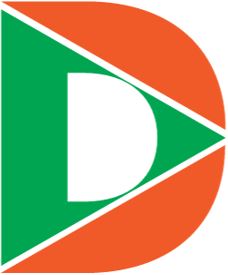Web Analytics: Enhancing Your Content Strategy for Bloggers
Introduction
Welcome to the world of Web analytics, where information becomes your most valuable ally when it comes to creating content. Knowing how to use web analytics can alter everything for bloggers. Creating content that connects with your audience is more important than simply producing a ton of stuff. We will go deeply into web analytics in this post, offering insights derived from actual experiences and reliable sources. You’ll discover how to improve your online visibility and content strategy for bloggers.
Understanding Web Analytics
It’s important to comprehend the basics of web analytics before we get into the ways that bloggers might benefit from them. A website’s visitors and their interactions with the content are tracked and measured by a variety of metrics connected to web analytics. Decisions about content can be guided by the data-driven insights these indicators offer.
The Power of Web Analytics
Exploring the Potential
The compass that leads bloggers through the wide online terrain is web analytics. Making educated selections is all about obtaining and analyzing data from your website.
By utilizing Web Analytics to its fullest, you can:
Understand Your Audience
Web Analytics lets you know who’s visiting your blog, where they’re from, and what they’re interested in. Having this insight will help you better customize your material.
Optimize Content
Analyze which blog posts perform best. You can then create more of the content that your audience loves.
Track Conversions
Whether it’s sign-ups, purchases, or other actions, Web Analytics helps you monitor what drives your audience to take action.
Social Media Promotion
Knowing which social media platforms are most effective in driving traffic can help bloggers allocate their promotional efforts more efficiently.
Email Marketing
Web analytics can also inform email marketing strategies. Bloggers can identify which content leads to more email sign-ups and tailor their email campaigns accordingly.
SEO Improvement
Discover which keywords are driving organic traffic and optimize your content accordingly.
Making Data-Driven Decisions
Crafting Content That Converts
With Web Analytics, you can identify what type of content is converting visitors into subscribers or customers. Here’s how:
Traffic Source Analysis
Analyze where your traffic is coming from. Is it from social media, search engines, or other websites? Knowing this helps you allocate resources effectively.
Behavior Flow
See how visitors navigate your site. Are they dropping off after a specific page? Utilize this knowledge to enhance the user experience.
Conversion Funnels
Track the path visitors take to become customers. Find the reason for the bottlenecks and make the required corrections.
The Art of Engagement
Understanding User Behavior
Web analytics isn’t just about numbers; it’s about understanding your audience on a deeper level.
Bounce Rate Insights
Discover why visitors are leaving your site after viewing a single page. This data can lead to content improvements.
Time on Page
A longer time spent on a page indicates engagement. Find the most interesting content you have and try to repeat its success.
Device and Location Data
Learn if your audience primarily accesses your blog from mobile devices or specific locations. Tailor your content to suit their preferences.
Web Analytics: Enhancing Your Content Strategy for Bloggers
Creating Targeted Content
Your blog is a hub for valuable content. Web analytics allows you to create content that’s laser-focused on your audience’s needs.
Keyword Analysis
Determine which keywords are driving traffic and incorporate them into new content.
Content Gaps
Determine the subjects that you haven’t addressed but that other people have. This opens up new content opportunities.
Content Calendar
Use data to plan your content strategy. Know when to release content for maximum impact.
Tracking Progress and Iteration
The beauty of web analytics is that it allows bloggers to track their progress continually. Regular analysis of data can help bloggers make iterative improvements to their content strategy.
Conclusion
Understanding web analytics is like having a powerful instrument in the world of blogging. You may improve your content strategy, effectively engage your audience, and eventually expand the audience for your blog by utilizing the abundance of data at your disposal. Recall that making decisions based on data is essential for success in the digital era.
FAQs
Q: How should I use LSI keywords in my headings, and what do they mean?
Ans: LSI (Latent Semantic Indexing) keywords are terms related to your main keyword. They help search engines understand your content better. In your headings, use LSI keywords naturally to provide context to your content without overstuffing them.
Q: I want to know if my social media campaigns are successful. Can internet analytics help?
Ans: Absolutely. Internet analytics can track traffic coming from social media, allowing you to assess the impact of your campaigns. You can see which platforms drive the most visitors and refine your social media strategy accordingly.
Q: How often should I review the data from internet analytics?
Ans: Regularly monitoring your internet analytics is essential. Checking at least once a week can help you stay on top of your site’s performance and make timely adjustments.
Q: Are internet analytics tools available for free?
Ans: Yes, there are free tools like Google Analytics and Google Search Console that provide valuable insights into your website’s performance.
Q: Is computer expertise required to use internet analytics?
Ans: Not at all. Many internet analytics tools are user-friendly and require no technical expertise. You can get started with basic metrics and gradually delve into more advanced features.
Q: Which internet analytics measure is most important for bloggers?
Ans: The bounce rate is a key metric to watch. It tells you how many visitors leave your site without interacting with it. A high bounce rate can indicate that your content or site layout needs improvement.

As a DIGITALTECHSIDE author, the majority of our articles have been focused on technology, blogging, business, lifestyle, social media, web design and development, e-commerce, money, health, education, entertainment, SEO, travel, and sports.
Contact us at digitaltechside@gmail.com if you have questions of anything.




